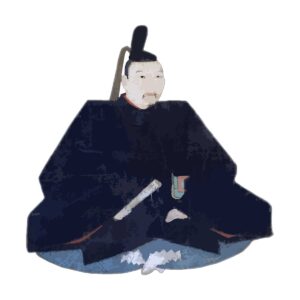
Ashikaga Yoshimasa was the 8th Ashikaga Shogun. Born in 1435 (Eikyo 7). Second son of the sixth Yoshinori.
He succeeded his elder brother Yoshikatsu at the age of nine and assumed the shogunate at the age of fifteen, but he lacked political ability as a shogun because he could not find anyone to assist him in the shogunate, and natural disasters such as famine and epidemics added to this.
Furthermore, the trend toward strict control of the government led to frequent revolts, and it is said that during his sixteen years in office, the shogunate issued decrees on moral issues a total of thirteen times.
In 1473, at the age of 38, Yoshimasa handed over his position to his son Yoshihisa, who ran the Ginkaku (silver pavilion) at his Higashiyama villa and built Togudo Dojinsai, where he retired to devote himself to his studies and artistic pursuits.
He was widely interested in waka poetry, renga, Noh drama, tea ceremony, gardening, and calligraphy and painting. In terms of literature, art, and performing arts, it left behind a prosperous name for the Higashiyama period in later generations.
He died on January 7, 1490 (Entoku 2) at the age of 55. He died on January 7, 1490 (Entoku 2) at the age of 55. The Higashiyama Gomotsu (Higashiyama Imperial Treasures) were collected from Yoshinobu II (Hoyinin, Zuizan), Yoshimitsu III (Rikaenin, Tenzan), Yoshinori VI (Fuhouin, Dozan) to Yoshimasa, and the “Kimidai Kanjocho Ki” and “Goshikisho” are a detailed description of the items, authors and decorations. In particular, it says, “The tea ceremony is a famous loan at this time, and the quality of the writing is very high and clear. ……
As Dohinsai is also said to be the origin of the teahouse, it is likely that tools, the teahouse, and tea ceremony methods were created by Noami, Shuko, and others during the Yoshimasa era.



